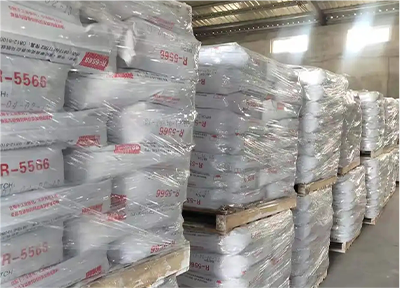
Oct . 19, 2025 10:55 Back to list
Titanium Dioxide – High Purity, UV Shield, Bright White
TITANIUM DIOXIDE FOR YARN, FABRIC AND HOME TEXTILES: What’s Driving the Next Bright Leap
If you work with yarns or home textiles, you already know the quiet hero in the line: titanium dioxide. To be honest, I’ve seen mills argue about draw ratios for hours but agree in five minutes that a solid TiO2 grade makes or breaks whiteness, opacity, and UV durability. This textile-focused grade from Jindi Industrial Park, Dacheng County, Langfang, Hebei, is tuned for bright whites, consistent dye backdrops, and real-world weathering.

Industry trends (and what mills quietly ask for)
Demand is shifting toward dope-dyed and recycled fibers, lower VOC finishing, and OEKO-TEX compliance. Surprisingly, a lot of purchasing managers now benchmark not just whiteness L, but b drift after 40 hours of Xenon arc. Many customers say they’ll pay a small premium for stable dispersion in PET and PA6 masterbatch, because downtime is pricier than pigment.
Technical specifications (textile-grade, practical)
| Parameter | Typical Value (≈ / real-world use may vary) |
|---|---|
| Crystal form | Rutile |
| Surface treatment | Alumina + Silica (fiber-grade) |
| Mean particle size | ≈0.25 μm primary; ≈0.8 μm in masterbatch |
| Whiteness (L) | ≥98.5; b ≤1.0 |
| Oil absorption | 18–22 g/100 g |
| pH (aqueous) | 6.5–8.5 |
| Moisture | ≤0.5% |
| Residue (45 μm) | ≤0.02% |
| Tinting strength | ≥1900 (relative) |
| Compliance | REACH, OEKO-TEX input check, ISO 9001/14001 |
| Recommended dosage | 0.2–1.0% in PET/PA/PP fibers |
Process flow (how it fits the line)
Materials: PET, PA6/66, PP polymer chips; titanium dioxide pigment; dispersants; antioxidant pack. Methods: vacuum drying → twin-screw compounding into masterbatch → chip blending at spin line → metered melt feed → spin/draw/heat-set. Testing standards: ISO 591-1 and ASTM D476 for pigment classification; ISO 105/Xenon (B02) and AATCC 16 for light fastness; ISO 7724 for Lab; ISO 18314 for tinting; migration and fogging per VDA 278 for automotive textiles. Service life: indoor textiles 5–10 years; outdoor awnings/upholstery ≈3–7 years depending on UV index and finish. Industries: apparel, bedding, curtains, nonwovens, outdoor furniture, automotive headliners.

Advantages in textiles
- High brightness and hiding power—whites look white, even on recycled blends.
- Stable dispersion—fewer spinneret deposits, smoother filament surfaces.
- UV resistance—helps slow yellowing and preserves hand feel over time.
- Consistent lot-to-lot color; many customers say shade matching got visibly easier.
Vendor landscape (quick, practical)
| Vendor | Grade focus | Particle size | Certs | MOQ | Lead time | Notes |
|---|---|---|---|---|---|---|
| CQ Pigments (Hebei) | Textile/fiber-grade rutile | ≈0.25 μm | ISO 9001/14001, REACH | 1 MT | 2–3 weeks | Strong PET/PA support |
| Global Vendor A | Multi-industry | ≈0.30 μm | REACH, RoHS | 5 MT | 4–6 weeks | Broad portfolio |
| Regional Vendor B | General-purpose TiO2 | ≈0.35 μm | Basic QA | 500 kg | 1–2 weeks | Budget option |
Customization and packaging
Options include tuned PSD for PET vs. PA, hydrophilic/hydrophobic surface treatments, and masterbatch carriers (PET/PA6/PP). Packaging: 25 kg bags or big bags. Tech team can align dosage and screw profile; I guess that’s why start-ups stick around after trials.

Case notes and feedback
- Home linens (PET/CO blend): b improved from 1.6 to 0.9; claims fewer yellow returns after 6 months.
- Outdoor upholstery (PP): ΔE after 200 h Xenon down ≈18%; fewer chalking complaints, according to the finisher.
- Microfiber mop yarn: spinneret cleaning interval extended from weekly to biweekly—small win, big savings.
How to evaluate quickly
Run a 10–20 kg masterbatch trial; target 0.3–0.6% titanium dioxide in PET. Check L, b after heat-setting, haze on filament, and Xenon 24–48 h. If your b drifts, tweak residence time and dryer dew point first—then pigment dosage.
Authoritative citations
-
Essential Guide to Calcium Powder Quotes – Pricing, Quality & Global Insights
NewsNov.24,2025
-
Reliable Anatase TiO2 Pigment Quotes for Sustainable Industry Use | CQ Titanium Dioxide
NewsNov.24,2025
-
Understanding Lithopone B311 Powder Quotes – Market Insights & Applications
NewsNov.23,2025
-
Reliable 30-50nm TiO2 Powders Quotes for Advanced Industrial Use | CQTitanium
NewsNov.23,2025
-
Comprehensive Guide on Lithopone Red Pigments Quotes | Industry Insights & Pricing
NewsNov.22,2025
-
Comprehensive Insights into the Lithopone Market: Global Trends & Applications
NewsNov.22,2025
